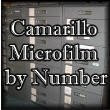
Although all members will benefit from being able to go through the new FamilySearch E-Learning courses, the lessons will especially help members who use the new FamilySearch in languages other than English or Spanish.
Currently, the Overviews in the new FamilySearch are available only in English and Spanish. The new FamilySearch E-Learning courses are available in English, Spanish, Portuguese, French, German, Chinese, Japanese, and Korean. Although the E-Learning courses are not exactly the same as the Overviews, their content is very similar.
Family history consultants should encourage the members in their wards or branches, especially those who use the new FamilySearch in Spanish, Portuguese, French, German, Chinese, Japanese, or Korean, to go through the new FamilySearch E-Learning courses so they can become more familiar with how to use the new FamilySearch.
To access the new FamilySearch E-Learning courses, members do the following:
· Log in to the new FamilySearch at www.new.familysearch.org.
· Select Help Center.
· Select Training and Resources.
· Select E-Learning Courses
The E-Learning Courses link gives all members access to a portion of the courses available to family history consultants and others with family history responsibilities. Consultants will continue to have access to the complete set of courses and resources when they select the same link.








